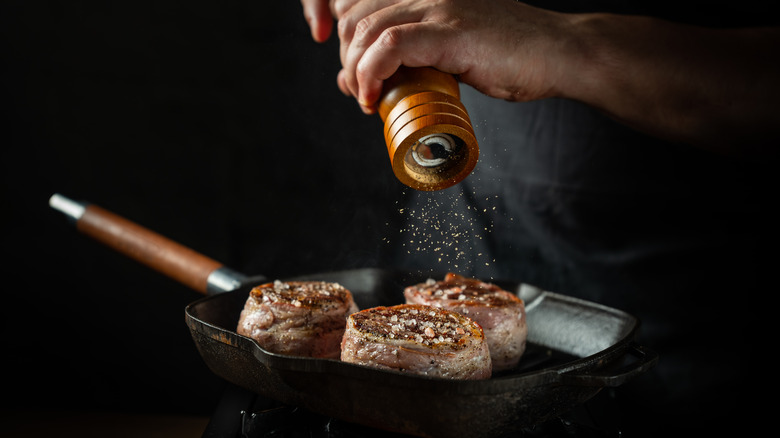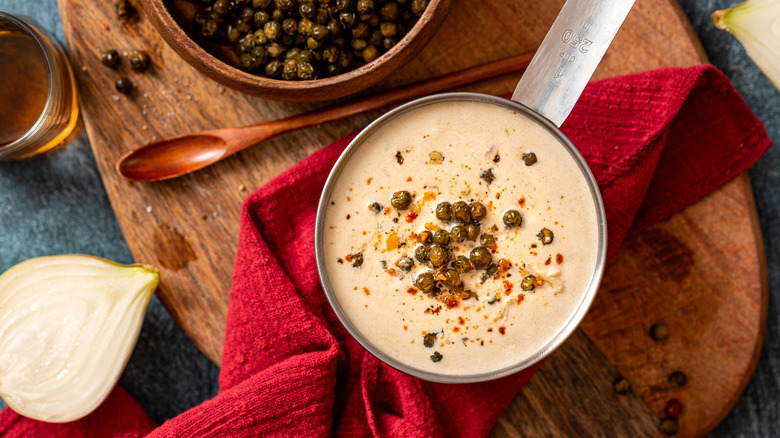Why You Shouldn't Season Both Sides Of Steak Au Poivre
What's your favorite way to enjoy a nice steak? Perhaps you favor sous-vided-then-seared ribeye; Maybe you like an herby grilled flat iron steak; Or perchance you just grab a piece of meat, salt it, broil it, and call it a day. Whichever preparation you choose, if you enjoy red meat, it's likely that the classic recipe of steak au poivre has crossed your radar at some point.
With origins tracing back to 19th century bistros of Normandy, France, according to Saveur, steak au poivre — beef filets that are heavily seasoned with salt and cracked black pepper before being seared in butter and draped in a quick cream-based pan sauce — became fashionable in 1960s America with the publication of a very special book. That tome was Julia Child's first edition of "Mastering the Art of French Cooking," the 1961 chef-d'oeuvre that made French classics such as coq a vin, quiche Lorraine, and tarte tatin accessible to home cooks across the United States (via Southern Living). The book's publication also effectively gave rise to a steak au poivre trend in the country's burgeoning French restaurant scene, according to culinary historian Sarah Lohman.
While the dish has mostly vanished from all but the most staid of French eateries, it's still a fun — and approachable — way to make steak at home.
Just one layer of peppercorns helps create a better sear on the steak
If you've ever made steak au poivre at home, or eaten it in a restaurant, the preparation you're familiar with likely boasted a thick layer of crushed peppercorns on both sides of the steak. When the beef is seared in butter in a pan, those peppercorns get all fragrant, toasted, and crispy, according to Serious Eats, making for a beguiling contrast with the tender meat and creamy pan sauce.
But when the outlet's senior culinary director Daniel Gritzer began testing the recipe for a version for the site, he found that having a thick peppercorn crust on both sides of the steak impeded proper searing, as no part of the meat would directly touch the pan. That also meant that very little fond — the browned, seared stuff that sticks to a pan — would develop, making for a less flavorful sauce once the pan was deglazed.
To solve the issue, Gritzer counsels crusting the steak on one side only, then making an extra-peppery cream sauce in order to keep all that spicy pepper flavor in the dish. And chef Steve Corry seems to agree, advising in his recipe for steak au poivre to coat just "one side of each steak."
Steak au poivre that's beautifully peppery and gets a nice, direct sear? Sign us up, please.

